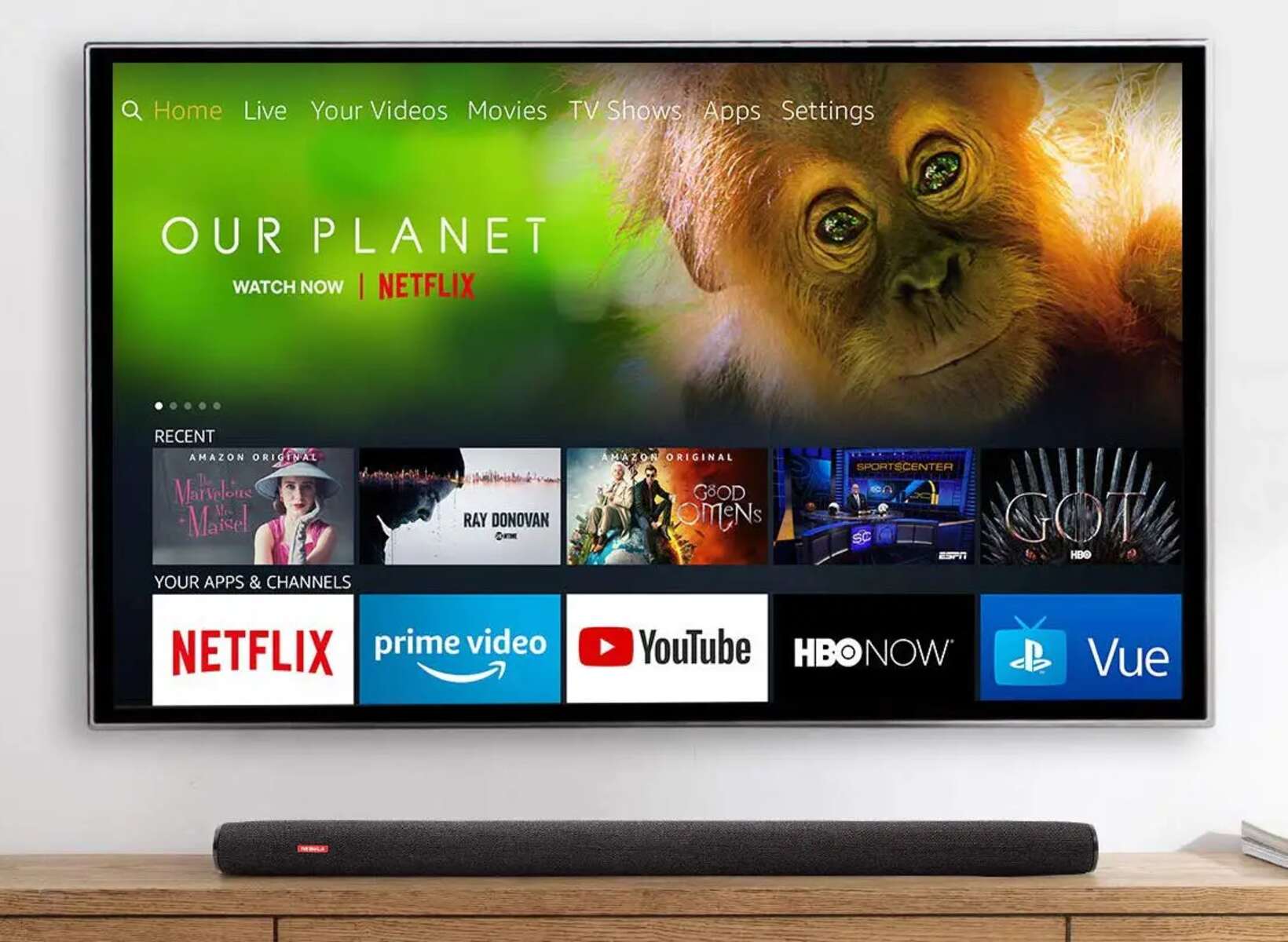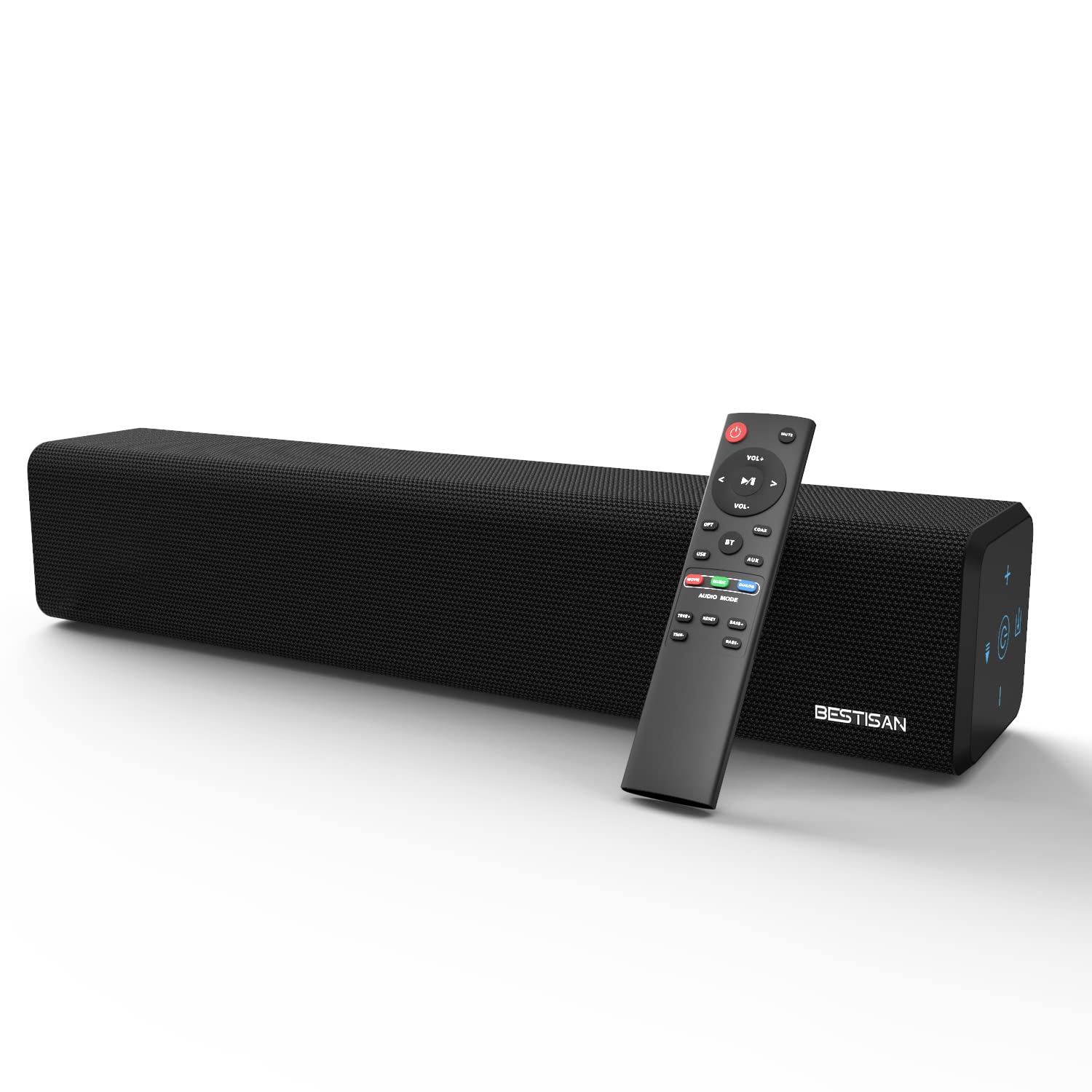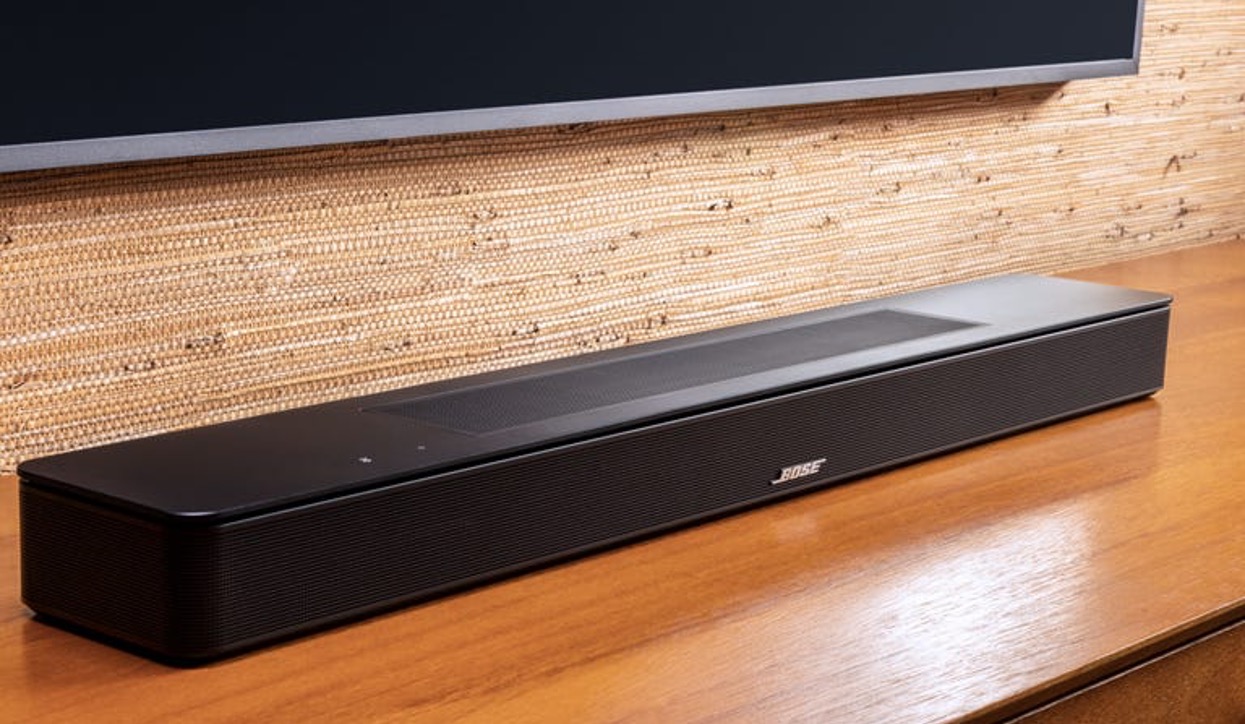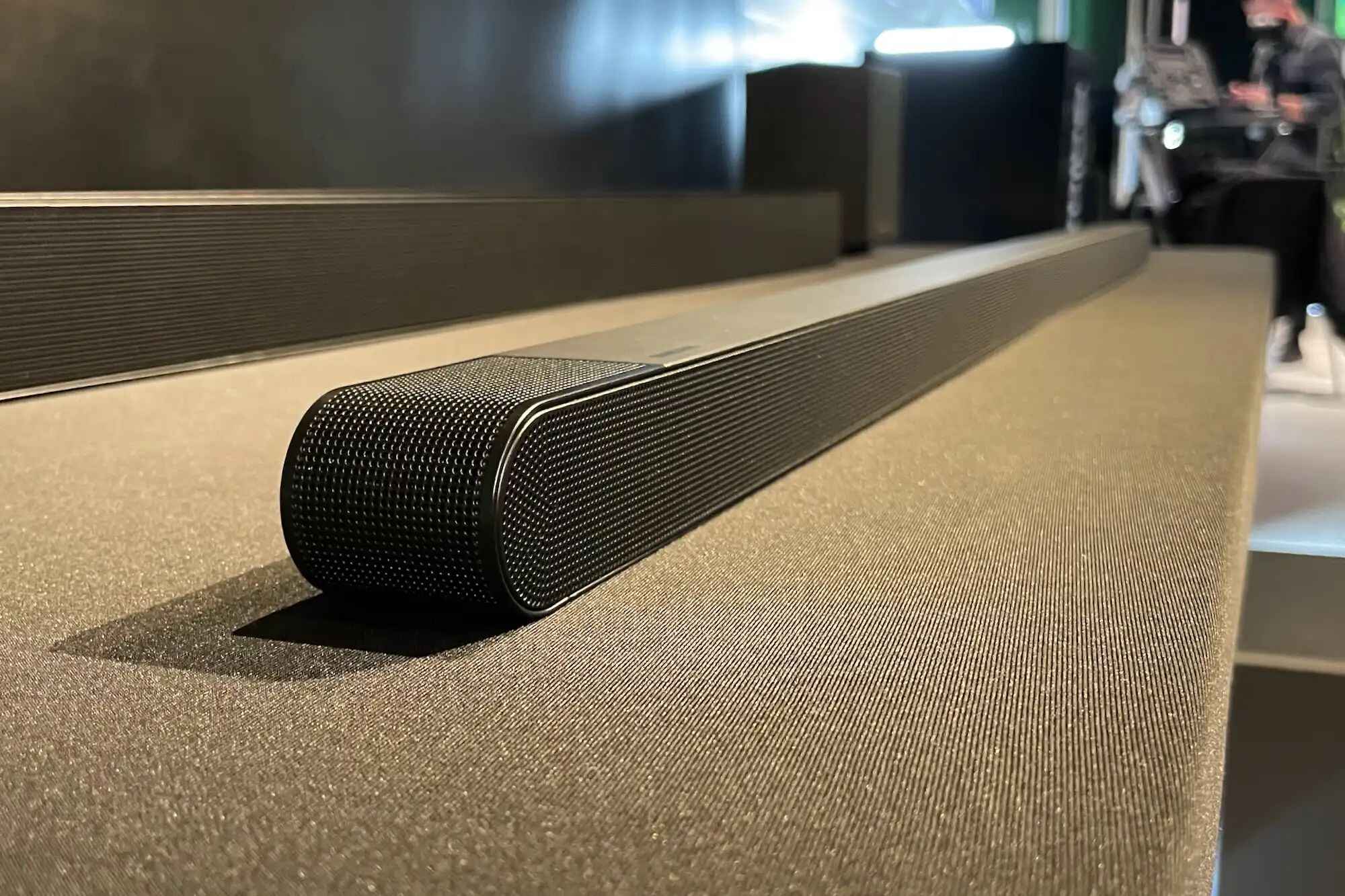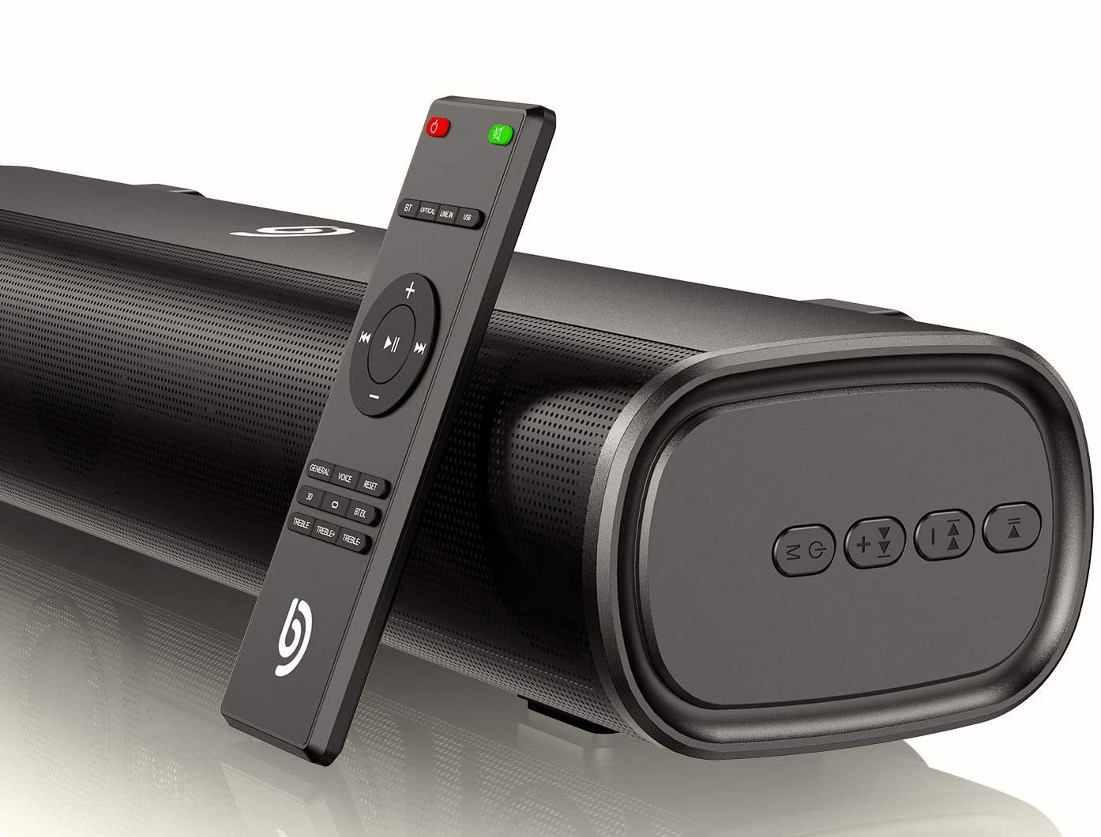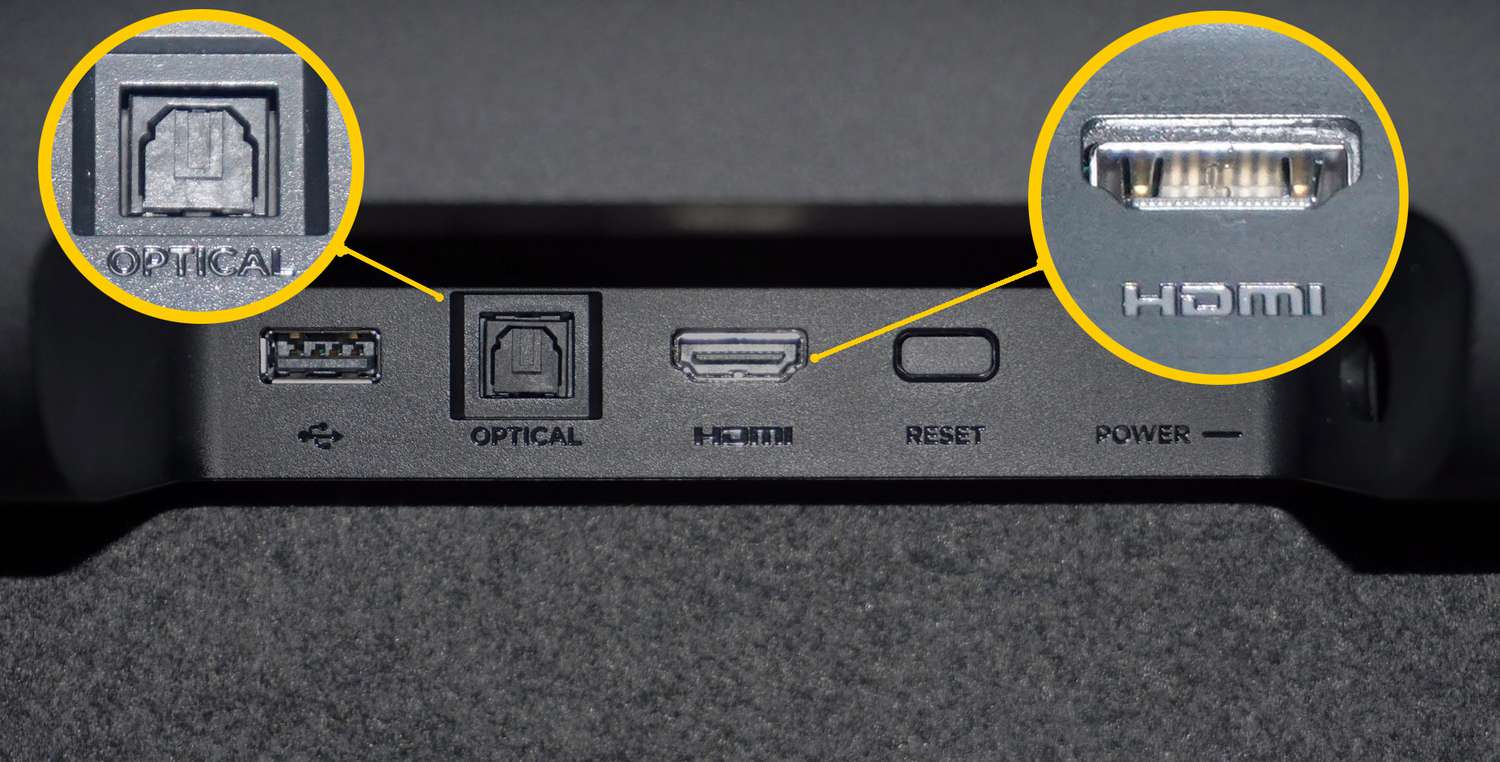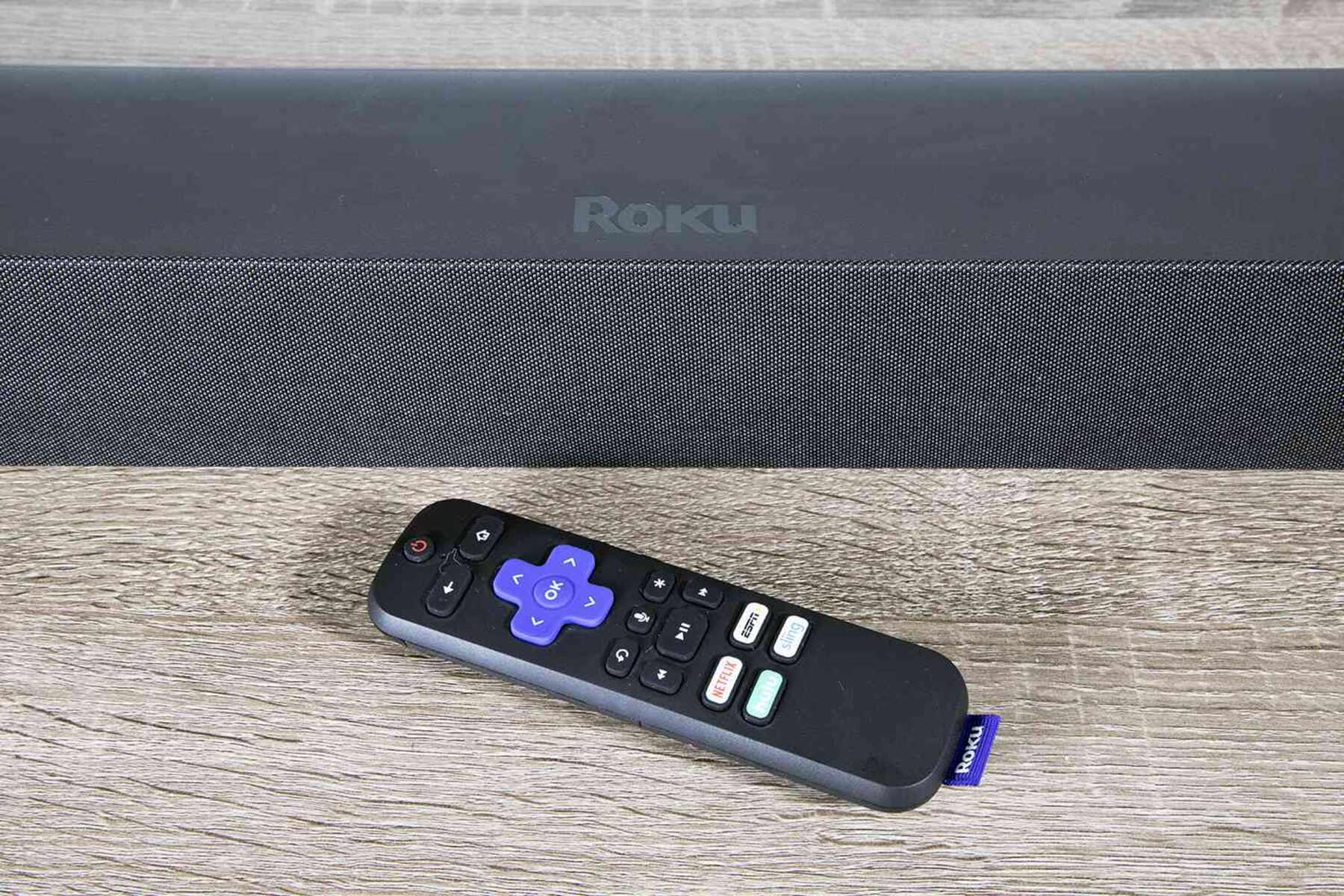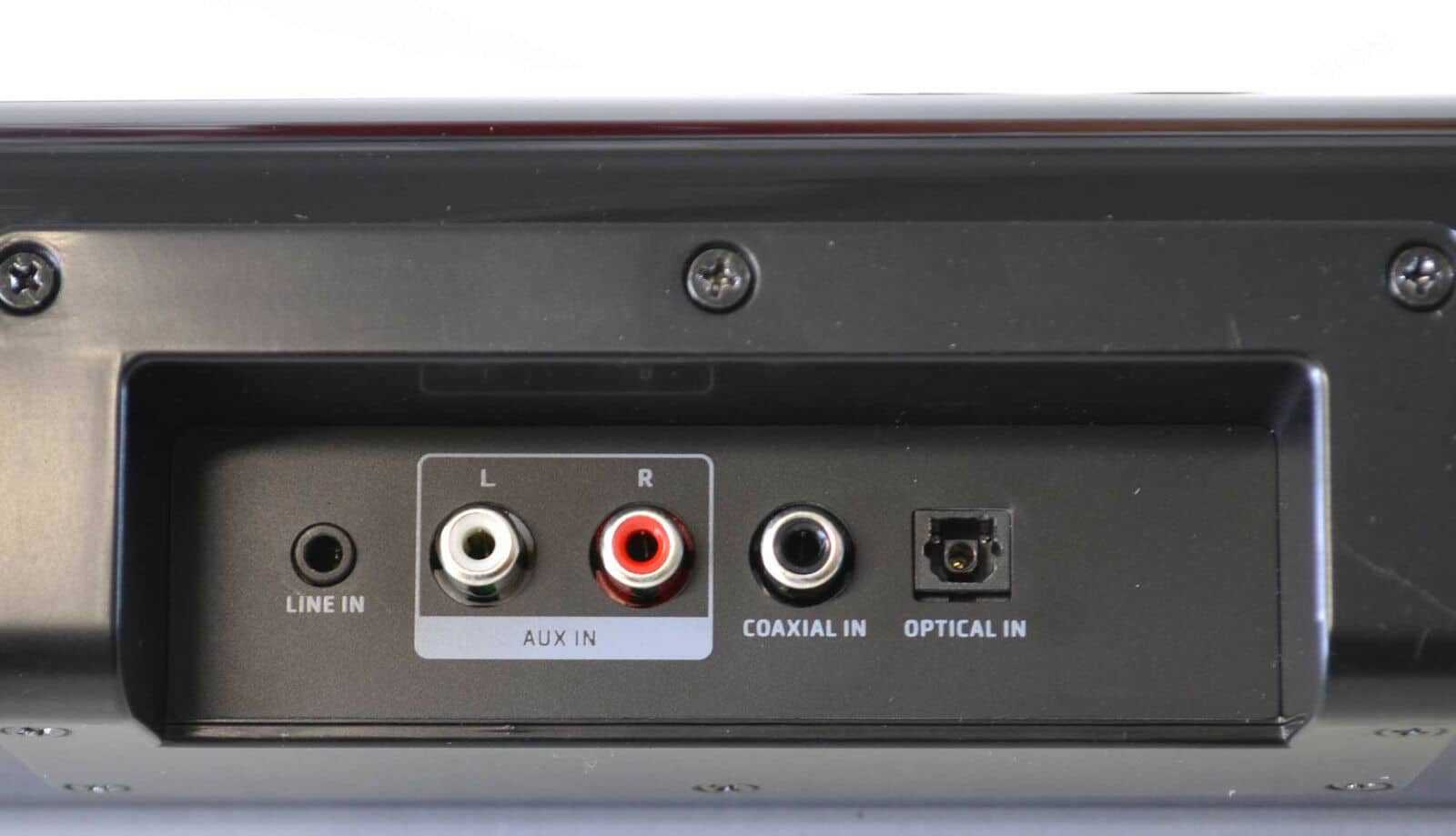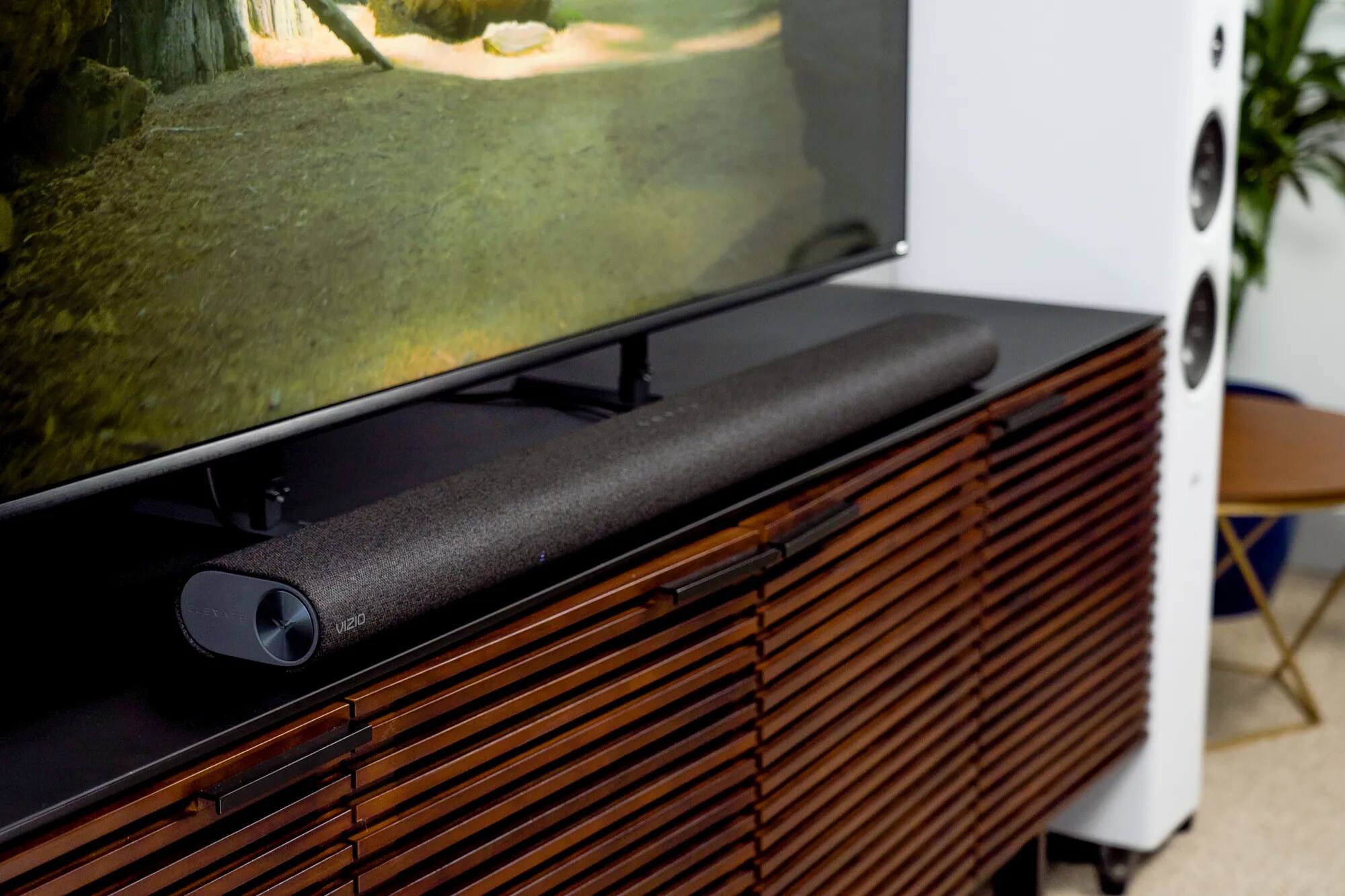Introduction
Connecting a soundbar to a TV without an optical cable might seem like a daunting task, especially if you're used to traditional setups. However, with the right methods and equipment, you can easily achieve this and enjoy an immersive audio experience without the need for an optical cable. Whether your TV lacks an optical audio output or you simply prefer alternative options, there are several effective ways to establish a connection between your TV and soundbar.
In this guide, we'll explore various methods for connecting your soundbar to your TV without using an optical cable. From utilizing HDMI ARC and adapters to making use of RCA cables and 3.5mm audio connections, we'll cover the step-by-step processes for each approach. By the end of this article, you'll have a clear understanding of how to seamlessly integrate your soundbar with your TV, regardless of the absence of an optical cable.
Let's dive into the different techniques and equipment that will enable you to establish a reliable and high-quality audio connection between your TV and soundbar. Whether you're a tech enthusiast looking to explore alternative setups or simply need a quick solution due to equipment limitations, the following methods will equip you with the knowledge and confidence to connect your soundbar to your TV without an optical cable.
Using HDMI ARC
One of the most popular and convenient methods for connecting a soundbar to a TV without an optical cable is through the use of HDMI ARC (Audio Return Channel). Many modern TVs and soundbars are equipped with HDMI ARC ports, allowing for seamless audio transmission between the two devices.
To establish a connection using HDMI ARC, begin by identifying the HDMI ARC ports on both your TV and soundbar. Typically, these ports are labeled as “HDMI ARC” and are often accompanied by specific markings to indicate their functionality. Once located, simply connect an HDMI cable from the HDMI ARC port on your TV to the corresponding port on your soundbar. This establishes a direct audio link, enabling the soundbar to receive audio signals from the TV and eliminating the need for an optical cable.
After physically connecting the devices, access the settings menu on your TV to enable HDMI ARC functionality. This may involve navigating to the audio settings and selecting the HDMI ARC input as the primary audio output source. Additionally, some soundbars may require specific settings adjustments to recognize the HDMI ARC input properly. Refer to the user manuals for your TV and soundbar to ensure that the necessary configurations are in place.
Once the HDMI ARC connection is established and the settings are configured, you can enjoy high-quality audio playback from your TV through the soundbar. HDMI ARC not only delivers excellent sound performance but also provides the convenience of streamlined connectivity, making it an ideal alternative to optical cables.
While HDMI ARC offers a straightforward and effective way to connect your soundbar to your TV without an optical cable, it’s essential to ensure that both your TV and soundbar support this feature. Additionally, using HDMI ARC may require specific cable and device configurations, so be sure to consult the user manuals for detailed instructions tailored to your equipment.
Using HDMI ARC with an Adapter
If your TV or soundbar does not have an HDMI ARC port, or if you encounter compatibility issues, you can still connect your soundbar to your TV using HDMI ARC with the help of an adapter. This method allows you to leverage the benefits of HDMI ARC even if your devices do not natively support this feature.
To utilize HDMI ARC with an adapter, you’ll need to acquire an HDMI ARC audio extractor or an HDMI ARC to optical audio converter, depending on the specific requirements of your TV and soundbar. These adapters are designed to facilitate the transmission of audio signals from the TV to the soundbar, effectively emulating the functionality of HDMI ARC even when the devices themselves lack native support for this feature.
Begin by connecting an HDMI cable from the HDMI ARC port on your TV to the input port of the HDMI ARC adapter. Next, connect another HDMI cable from the output port of the adapter to the HDMI input port on your soundbar. This configuration enables the adapter to extract the audio signals from the HDMI ARC connection and deliver them to the soundbar, effectively bypassing the need for a direct HDMI ARC connection between the TV and soundbar.
Once the physical connections are in place, power on the adapter and ensure that the necessary settings on your TV and soundbar are adjusted to accommodate the adapter’s presence. This may involve selecting the appropriate audio output settings on your TV and soundbar to recognize the adapter as the intermediary for audio transmission.
By using HDMI ARC with an adapter, you can overcome compatibility limitations and establish a reliable audio connection between your TV and soundbar without relying on an optical cable. This method provides a versatile solution for integrating HDMI ARC functionality into your existing setup, allowing you to enjoy the benefits of high-quality audio playback without the constraints of native HDMI ARC support.
When selecting an HDMI ARC adapter, be sure to consider the specific requirements of your TV and soundbar, as well as any additional features or compatibility considerations. Consulting the user manuals for your devices and the adapter will provide valuable insights into the setup process and ensure optimal performance.
Using RCA Cables
When connecting a soundbar to a TV without an optical cable, another viable option is to utilize RCA cables. While RCA cables may not offer the same digital audio transmission capabilities as HDMI ARC or optical cables, they provide a reliable analog connection that can effectively link your TV and soundbar for audio playback.
To connect your soundbar to your TV using RCA cables, identify the RCA audio output ports on your TV and the corresponding RCA audio input ports on your soundbar. These ports are typically color-coded as red and white, corresponding to the right and left audio channels, respectively. Once located, simply connect the red and white RCA cables from the audio output ports on your TV to the corresponding input ports on your soundbar.
After establishing the physical connections, access the audio settings on your TV to ensure that the RCA output is selected as the primary audio source. Additionally, some soundbars may require specific input selections or mode adjustments to recognize the RCA audio input properly. Refer to the user manuals for your TV and soundbar to verify the necessary settings and configurations.
While RCA cables offer a straightforward and accessible method for connecting your soundbar to your TV, it’s important to note that analog connections may not deliver the same level of audio fidelity as digital interfaces like HDMI ARC or optical cables. However, for many users, RCA cables provide a practical and functional solution for establishing an audio link between their TV and soundbar without the need for an optical cable.
When utilizing RCA cables, consider the cable length and quality to ensure optimal audio transmission and minimize potential signal degradation. Additionally, inspect the RCA ports on your TV and soundbar to ensure a secure and snug connection, as loose or damaged ports can impact audio performance.
Using a 3.5mm Audio Cable
Connecting a soundbar to a TV without an optical cable can also be achieved by utilizing a 3.5mm audio cable, commonly known as a headphone jack cable. While this method may not offer the same advanced audio transmission capabilities as digital interfaces, it provides a straightforward and accessible way to establish an audio connection between your TV and soundbar.
To connect your soundbar to your TV using a 3.5mm audio cable, locate the headphone or audio output jack on your TV and the corresponding input jack on your soundbar. The 3.5mm audio cable features a standard headphone jack on both ends, allowing for a direct connection between the TV and soundbar.
Once you’ve identified the audio output jack on your TV and the input jack on your soundbar, simply plug one end of the 3.5mm audio cable into the TV’s headphone jack and the other end into the input jack on your soundbar. This establishes a direct analog audio connection, enabling the soundbar to receive audio signals from the TV without the need for an optical cable.
After making the physical connection, access the audio settings on your TV to confirm that the headphone jack output is selected as the primary audio source. Additionally, ensure that the soundbar is set to recognize the 3.5mm audio input as the designated audio source. Refer to the user manuals for your TV and soundbar to verify the necessary settings and configurations.
While using a 3.5mm audio cable provides a simple and accessible method for connecting your soundbar to your TV, it’s important to consider the limitations of analog audio transmission. Analog connections may not offer the same level of audio fidelity as digital interfaces, and the length of the 3.5mm audio cable can impact signal quality. However, for many users, the convenience and accessibility of a 3.5mm audio cable make it a practical solution for establishing an audio link between their TV and soundbar without relying on an optical cable.
When utilizing a 3.5mm audio cable, ensure that the cable length is sufficient for your setup and that the connections are secure to minimize potential signal interference or degradation. Additionally, consider the placement of the connected devices to maintain a tidy and organized setup while optimizing audio performance.
Conclusion
Connecting a soundbar to a TV without an optical cable opens up a world of possibilities for enhancing your audiovisual experience. By exploring alternative methods such as HDMI ARC, adapters, RCA cables, and 3.5mm audio connections, you can seamlessly integrate your soundbar with your TV, regardless of the absence of an optical cable.
Each method offers its own unique advantages and considerations, allowing you to tailor the connection to your specific equipment and preferences. HDMI ARC stands out as a versatile and high-quality option, providing seamless audio transmission between compatible devices. Additionally, utilizing HDMI ARC with an adapter offers a flexible solution for overcoming compatibility limitations and extending the benefits of HDMI ARC to a wider range of setups.
For those seeking a straightforward analog connection, RCA cables and 3.5mm audio cables provide accessible alternatives that can effectively link your TV and soundbar for audio playback. While these methods may not offer the same advanced features as digital interfaces, they offer practical solutions for establishing reliable audio connections without the need for an optical cable.
As you explore the various methods for connecting your soundbar to your TV without an optical cable, consider the specific requirements and capabilities of your devices. Consult the user manuals for your TV and soundbar to ensure that the necessary settings and configurations are in place, and carefully select the appropriate cables and adapters to suit your setup.
By embracing these alternative connection methods, you can unlock the full potential of your soundbar and enjoy immersive audio that complements your viewing experience. Whether you opt for the convenience of HDMI ARC, the versatility of adapters, or the simplicity of analog connections, the ability to connect your soundbar to your TV without an optical cable empowers you to create a customized audio setup that aligns with your preferences and equipment.
With the knowledge and insights gained from this guide, you are well-equipped to confidently establish a reliable and high-quality audio connection between your TV and soundbar, regardless of the absence of an optical cable.







